Saving Fish From Drowning Read online
Table of Contents
Title Page
Copyright Page
Epigraph
Chapter 1 - A BRIEF HISTORY OF MY SHORTENED LIFE
Chapter 2 - MY PLANS UNDONE
Chapter 3 - SUCH WAS THEIR KARMA
Chapter 4 - HOW HAPPINESS FOUND THEM
Chapter 5 - WE ALL DO WHAT WE MUST
Chapter 6 - SAVING FISH FROM DROWNING
Chapter 7 - THE JACARANDAS
Chapter 8 - IT WAS NOT JUST A CARD TRICK
Chapter 9 - NO TRACE
Chapter 10 - NO NAME PLACE
Chapter 11 - THEY ALL STUCK TOGETHER
Chapter 12 - DARWIN’S FITTEST
Chapter 13 - OF PARTICULAR CONCERN
Chapter 14 - THE INVENTION OF NOODLES
Chapter 15 - A PROMISING LEAD
Chapter 16 - HOW THEY MADE THE NEWS
Chapter 17 - THE APPEARANCE OF MIRACLES
Chapter 18 - THE NATURE OF HAPPY ENDINGS
genuine gratitude
Dedication
· ALSO BY AMY TAN ·
FICTION
The Joy Luck Club
The Kitchen God’s Wife
The Hundred Secret Senses
The Bonesette’s Daughter
NONFICTION
The Opposite of Fate
FOR CHILDREN
The Moon Lady
The Chinese Siamese Cat
AMY TAN
G. P. PUTNAM’S SONS
New York
G. P. PUTNAM’S SONS
Publishers Since 1838
Published by the Penguin Group
Penguin Group (USA) Inc., 375 Hudson Street, New York, New York 10014, USA
Penguin Group (Canada), 90 Eglinton Avenue East, Suite 700, Toronto, Ontario M4P 2Y3,
Canada (a division of Pearson Penguin Canada Inc.) • Penguin Books Ltd, 80 Strand,
London WC2R 0RL, England • Penguin Ireland, 25 St Stephen’s Green, Dublin 2, Ireland
(a division of Penguin Books Ltd) • Penguin Group (Australia), 250 Camberwell Road,
Camberwell, Victoria 3124, Australia (a division of Pearson Australia Group Pty Ltd)
Penguin Books India Pvt Ltd, 11 Community Centre, Panchsheel Park, New Delhi-110 017,
India • Penguin Group (NZ), Cnr Airborne and Rosedale Roads, Albany,
Auckland 1310, New Zealand (a division of Pearson New Zealand Ltd)
Penguin Books (South Africa) (Pty) Ltd, 24 Sturdee Avenue,
Rosebank, Johannesburg 2196, South Africa
Penguin Books Ltd, Registered Offices: 80 Strand, London WC2R 0RL, England
Copyright © 2005 by Amy Tan
All rights reserved. No part of this book may be reproduced, scanned, or
distributed in any printed or electronic form without permission. Please
do not participate in or encourage piracy of copyrighted materials in
violation of the author’s rights. Purchase only authorized editions.
Published simultaneously in Canada
A joint publication of G. P. Putnam’s Sons, a division of Penguin Group (USA) Inc., and
The Random House Publishing Group, a division of Random House, Inc.
Library of Congress Cataloginging-in-Publication Data
Tan, Amy.
Saving fish from drowning / Amy Tan.
p. cm.
eISBN : 978-0-399-15301-3
1. Americans—Burma—Fiction. 2. Missing persons—Fiction.
3. Tourists—Fiction. 4. Burma—Fiction. I. Title.
PS3570.A48S
813’.54—dc22
This book is printed on acid-free paper.
This is a work of fiction. Names, characters, places, and incidents either are the product of the author’s imagination or are used fictitiously, and any resemblance to actual persons, living or dead, businesses, companies, events, or locales is entirely coincidental.
While the author has made every effort to provide accurate telephone numbers and Internet addresses at the time of publication, neither the publisher nor the author assumes any responsibility for errors, or for changes that occur after publication. Further, the publisher does not have any control over and does not assume any responsibility for author or third-party websites or their content.
http://us.penguingroup.com
The evil that is in the world almost always comes of ignorance, and good intentions may do as much harm as malevolence if they lack understanding.
—ALBERT CAMUS
A pious man explained to his followers: “It is evil to take lives and noble to save them. Each day I pledge to save a hundred lives. I drop my net in the lake and scoop out a hundred fishes. I place the fishes on the bank, where they flop and twirl. “Don’t be scared,” I tell those fishes. “I am saving you from drowning.” Soon enough, the fishes grow calm and lie still. Yet, sad to say, I am always too late. The fishes expire. And because it is evil to waste anything, I take those dead fishes to market and I sell them for a good price. With the money I receive, I buy more nets so I can save more fishes.
—ANONYMOUS
· a note to the reader ·
THE IDEA FOR THIS BOOK began with a bolt of lightning and a clap of thunder. I was walking on the Upper West Side in Manhattan when I was caught without an umbrella in a fierce summer downpour. I spotted a possible shelter: a handsome brownstone building with gleaming black double doors. A brass plaque read: “American Society for Psychical Research.” Lured by the possibilities within, I rang the bell, and spent the rest of the day perusing the Society’s archives.
Like the first public library that I visited as a child, the room was jammed floor to ceiling with the leather and cloth spines of old books—little tombstones of ideas and history clothed in midnight blue, purple, brown, and black, the titles imprinted in fading gilt letters. In the center of the room were tall stools, a narrow wooden table, and cabinets housing Dewey Decimal cards. Within “A-Ca,” I found entries for “Automatic Writing,” descriptions of archived “messages from the unseen world.” They were written in various languages and orthographies, including Chinese, Japanese, and Arabic, reportedly transmitted to people who had no knowledge of the received language. The messages from royalty and famous personages were noteworthy for having signatures “verified by the experts.”
I was especially impressed with the transmissions received from 1913 to 1937 by an “ordinary homemaker” in St. Louis, Pearl Curran, who had no formal education past the age of fourteen, and was the recipient of stories from a garrulous ghost named Patience Worth. Patience purportedly lived in the 1600s and wrote of medieval times. The results were volumes of antiquated prose, with intimate knowledge of colloquialisms and social manners of olden days, a language that was not quite Middle English and yet contained no anachronisms past the seventeenth century. One of her page-turners began in this breezy way: “Dew-drop soggeth grasses laid low aneath the blade at yester’s harvest . . .” Aside from the stolid prose style, there was good reason to either admire or loathe Patience Worth and Pearl Curran. One of the novels was dictated in a span of thirty-five hours.
There was another case in the archives that fascinated me even more. The writings were recorded by a medium named Karen Lundegaard, who lived in Berkeley, California. She had received in fifty-four sessions a rambling story that was part rant, part memoir, delivered by a spirit named Bibi Chen.
The name startled me. There was a well-known woman by that name in my hometown, San Francisco. She had been a socialite and the owner of a landmark shop on Union Square, The Immortals, which sold decorative Asian antiques. She died under bizarre circumstances that were never fully explained. Karen Lundegaard described Bibi Chen accurately: “A petite, feisty Chin
ese woman, opinionated, and hilarious when she didn’t intend to be.”
I had a passing acquaintance with Bibi Chen, but I could not say I knew her personally. We exchanged brief hellos at the usual fund-raisers for the arts or the Asian-American community. Her name was often boldfaced in the social columns, and she was much photographed wearing dramatic garb, along with a multicolored braid and false eyelashes as thick as hummingbird wings.
Karen had transcribed Bibi’s voice in pencil on yellow legal pads. This began as spastic marks and jerky false starts, then gave way to pages of frantic squiggles and drunken scrawls, and gradually loped into the smooth shape of handwriting. It was as if I were seeing the electroencephalogram of the brain-dead being resuscitated, a marionette whose strings had been yanked into animation. Page after seamless page flowed with generous application of exclamation points and heavily underlined phrases, the style most beginning writers are cautioned against using.
When I returned to San Francisco, I met with Karen Lundegaard several times at her bungalow stuffed with arcana and, by her description, “tag-sale items.” She was quite frail, debilitated by metastatic breast cancer, which she had long known she had but for which she had been unable to get adequate treatment because she lacked medical insurance. (“If you mention anything about me,” she said, “tell people that.”) Although she was ill, she welcomed my peppering her with questions. Her sessions with Bibi Chen, she said, were professionally gratifying, because the spirit came through with great clarity. The connection to other spirits, she explained, was often indistinct, similar to mobile phone calls that go in and out of range. “Bibi has a very pushy personality,” she told me. I wondered if I might witness an automatic writing session. Karen promised to try, but said it would have to be later, when she felt better. “Receiving” drained her energy.
However these writings came to be, I decided the material was irresistible. In a city known for its characters, Bibi Chen was the genuine article, a true San Franciscan. Without giving away her story, I will mention only that she talked about eleven tourists missing in Burma, who were the subject of news headlines for weeks, a story readers may well recognize. While Karen Lundegaard may have constructed from what she had already read in the news, her writings contained details that were not reported, according to people I later interviewed.
Whether one believes in communication with the dead or not, readers are willing to suspend disbelief when immersed in fiction. We want to believe that the world we have entered through the portals of another’s imagination indeed exists, that the narrator is or has been among us. And so I have written this story as that, fiction inspired by Karen Lundegaard’s automatic writings. I retained Bibi’s religious and racial comments that may be offensive or humorous, depending on the reader’s politics. A few people who were part of the real events asked that I not use their names. And while I was not able to confirm some details that Bibi gave, I left in those I found interesting. Hence, there may be errors of fact. Then again, the nature of many people’s recollections entails some degree of embellishment, exaggeration, and the bias of opinion.
Although you may think this book was as effortless to write as those dictated by Patience Worth, I relied on the assistance of many to assemble the pieces. For interviews, I thank people too numerous to name, but you know who you are. I am grateful to the Asian Art Museum in San Francisco and the American Society for Psychical Research in New York for opening their doors to me. I hope readers will visit their collections and give generously to their coffers.
At the time of this writing, foreign writers and journalists were still not allowed in Burma, so I was not able to see the mentioned locations firsthand. Thus I appreciated the videos of the country lent to me by Vivian Zaloom. Bill Wu provided expert commentary on Buddhist art that is found in China and along the Burma Road and corrected some of Bibi’s interpretations of cultural influences. In some cases, I deliberately let stand her errors of interpretation, and I hope that Dr. Wu will forgive me for that. Mike Hearn of the Metropolitan Museum of Art in New York offered additional insight on the Chinese aesthetic. Robert and Deborah Tornello of Tornello Nurseries untangled what is found in a bamboo rainforest, and Mark Moffett’s The High Frontier: Exploring the Tropical Rainforest Canopy gave me a bird’s-eye view of the ecosystem with vivid and visceral pleasure; Mark Moffett has no relation to the character in this book with the same name. Ellen Moore organized the reams of information collected and kept distractions at bay. Animal behaviorist Ian Dunbar furnished insight on dog behavior and training principles, but the methods and philosophy depicted in this fiction do not accurately represent his.
While it is impossible to corroborate the thoughts and motives of the Myanmar junta, I have included “Bibi’s report” as fictional imaginings of fictional characters. This may have clouded the line between what is dramatically fictional and what is horrifyingly true. Let me briefly say, the truth of Bibi’s story can be found in numerous sources citing the myth of the Younger White Brother, the systematic killing of the Karen tribe, and even the military regime’s ban on reporting losses by its national soccer team. I apologize for any glaring inaccuracies, most of which are no doubt mine, but some may be “Bibi’s.” Editors Molly Giles and Aimee Taub deleted chaos on the page and clarified where I was going and why I was lost. Anna Jardine exterminated an infestation of embarrassments.
One final and important acknowledgment: I posthumously thank Karen Lundegaard, who gave me her blessing to use the “Bibi writings” in whatever way I wished, who tirelessly answered questions, and who welcomed me as a friend. Karen succumbed to her illness in October of 2003.
Tourists Flee Burma, Fears Over 11 Missing Americans
By May L. Brown Special Field Report for the San Francisco Chronicle
MANDALAY, December 31—In the glossy, air-conditioned bar of the Golden Pagoda Hotel, pampered tourists escape the humidity with cocktails charged at upscale American prices. But none are celebrating the coming New Year in the wake of reports that 11 Americans on an art expedition in Burma have been missing for almost a week under “suspicious” circumstances. The jittery hotel guests exchange rumors ranging from drug-running and hostage-taking to revenge by disturbed Nats, mischievous spirits in Burmese superstition.
The tourists, four men, five women, and two children from the San Francisco Bay Area, were last seen on December 25 at Inle Lake as guests of the Floating Island Resort. Before dawn on Christmas morning the Americans and their Burmese guide climbed into two piloted longboats to watch the sunrise. The jaunt normally takes 90 minutes. The passengers never returned, nor did the longboats and their crews.
The 61-square-mile lake, surrounded by pine-studded peaks, is a tangle of inlets to isolated villages and flotillas of tomato-growing paddies. The resort is in the mountainous region of southern Shan State, whose eastern border is the gateway to the Golden Triangle, notorious for its heroin trade. In past years, the region was closed to tourism because of warfare by ethnic tribes against the military government. Local tour operators emphasize the area today is trouble-free, citing that many resorts are even operated by the former warlords of other tribes.
The 11 tourists were first reported missing by another member of their group, Harry Bailley, 42, a British-born celebrity dog trainer featured on the television series “The Fido Files.” Bailley declined to join the sunrise adventure because he was ill with food poisoning. When his friends failed to return for lunch and dinner, he notified resort management, who, Bailley complained, did not immediately contact local authorities.
On December 26, the group’s 26-year-old Burmese guide, Maung Wa Sao, called “Walter,” of Rangoon (Yangon), was discovered unconscious by two 10-year-old acolytes from a monastery in In-u, near the opposite end of the lake. Maung was suffering from scalp lacerations, dehydration, and a possible concussion. From his hospital bed, he talked to Shan State military police and claimed no recollection of what had happened from the time he climbed in the boat un
til he was found in the crumbling ruins of a pagoda.
Shan military police did not contact the U.S. Embassy in Rangoon (Yangon) until December 29. “Our office is working intensively with the Burmese military regime,” said U.S. consular staff Ralph Anzenberger. “The disappearance of 11 Americans on holiday is of great concern to all. For now, the identities of the missing are being withheld, given the uncertainty of what the situation might be.”
He declined to confirm reports that one of the missing women is a prominent journalist and activist for a human rights organization, Free to Speak International. The military regime does not knowingly grant entry to foreign journalists, Anzenberger said. But Philip Gutman, spokesperson for Free to Speak in Berkeley, told the Chronicle, “[She’s] written stories about oppression, all of which are credible and well-documented.” Gutman feared that the Burmese military regime may have detained the journalist and her companions, and that they may have joined a reported 1500 political prisoners. “They’ve been known to lock up anyone who criticizes them,” Gutman pointed out. “Their notions of human rights are pretty perverse.”
Gutman also acknowledged that the journalist has participated in rallies in support of Burma’s opposition leader, Aung San Suu Kyi, “the Lady,” whose party’s landslide victory in the 1990 elections was illegally overturned by the junta. Aung San Suu Kyi, who has been under house arrest since 1989, was awarded the Nobel Peace Prize for 1991. She has repeatedly called upon other governments to apply pressure on the junta by ceasing commerce with Burma. The U.S. imposed sanctions on new business development in 1997.

 The Joy Luck Club
The Joy Luck Club The Valley of Amazement
The Valley of Amazement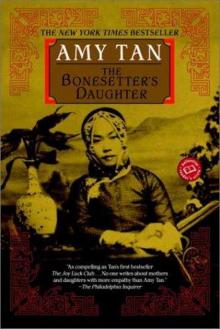 The Bonesetter's Daughter
The Bonesetter's Daughter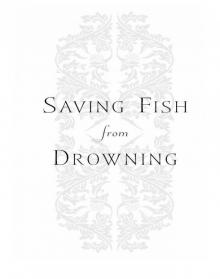 Saving Fish From Drowning
Saving Fish From Drowning Rules for Virgins
Rules for Virgins The Kitchen God's Wife
The Kitchen God's Wife The Hundred Secret Senses
The Hundred Secret Senses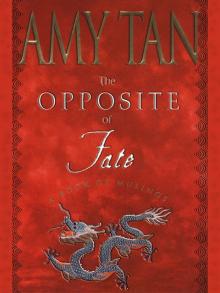 The Opposite of Fate: Memories of a Writing Life
The Opposite of Fate: Memories of a Writing Life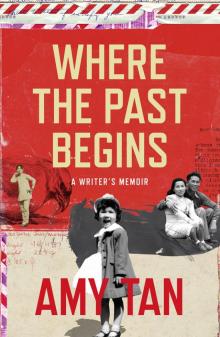 Where the Past Begins
Where the Past Begins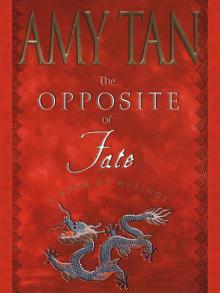 The Opposite of Fate
The Opposite of Fate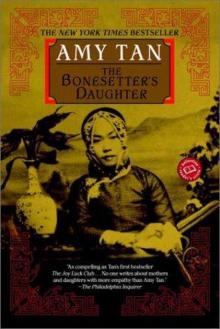 (2001) The Bonesetter's Daughter
(2001) The Bonesetter's Daughter